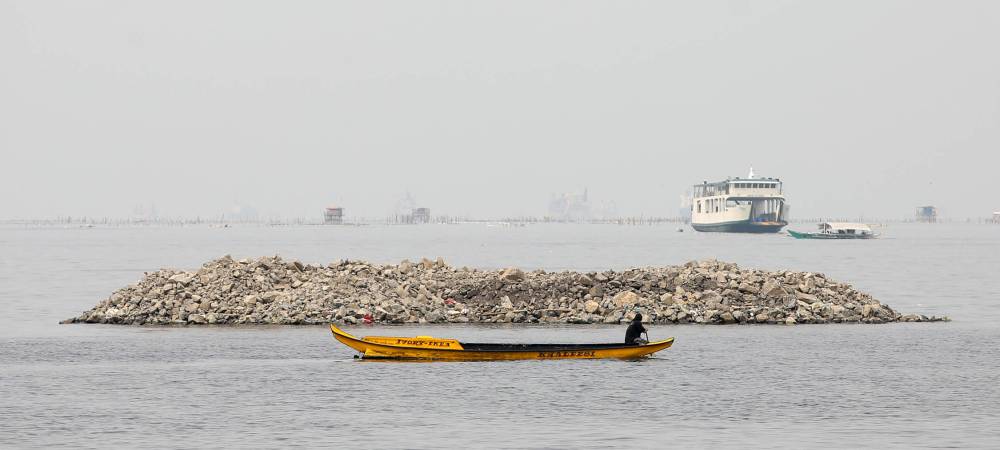EXPLAINER: Is it safe to eat heavy metal-laden fish from Manila Bay and Laguna Lake?

- Heavy metals, such as lead, mercury, and cadmium, are lipophilic substances, which means they tend to be stored in body fat. Since heavy metals have low solubility in the water, they are deposited in fatty tissues. Avoidance is the best way to prevent mercury exposure when consuming fish. Limit consumption of tuna, swordfish, and mackerel, which have high mercury content. Eat sardines, anchovies, and other fish that are lower in mercury instead. Filter feeders like mussels and oysters, which are known to concentrate various heavy metals including arsenic and cadmium, should also be avoided, particularly if sourced from polluted waters.
CNN featured a research article published in the Journal of the American College of Cardiology. It delves into less-known factors that could lead to the formation of calcium deposits in the coronary arteries. The authors of the research article implicated heavy metals in our diet as a major cause of coronary disease. The authors conclude that knowing the cause of coronary calcification offers new approaches to preventing and treating it. If you want to understand more about this subject, you can find the original research conducted by Katlyn McGraw here.
This discovery is important because it suggests the potential harm that small amounts of heavy metals in the environment can cause to humans, even though such amounts are within safety limits. Keep in mind that contaminating food even with a minute amount of heavy metals can lead to their gradual accumulation through bioaccumulation, which eventually causes harm.
Exposure to heavy metals such as mercury, cadmium, and lead can result in serious health issues. These ubiquitous pollutants are known to be toxic even in small quantities, according to a 2015 paper titled “A review of the risk assessment of heavy metals in Malaysian clams” by Md Faruk Hossen and colleagues. It is also documented that these heavy metals, when ingested, can accumulate in the kidneys, tissues, and other organs.
Importance of quality sources in a fish diet for optimal health
The study underscores the potential risk to Filipinos who prefer fish as their main source of protein. In a paper published by Jeff Corpuz, with the title “Cardiovascular disease in the Philippines: A new public health emergency?”, the author pointed out that today, heart diseases are the most common causes of death in the Philippines. With the clear evidence of an increasing rate at which heart diseases are on the rise, there is a need for urgent clinical evaluation and research not only into the development of more effective interventions for vulnerable people but also more specific studies to delve into the causes of this looming disaster in the Philippines.
Is it possible that the heavy metal-laden fish that we consume contributes to the prevalence of cardiovascular diseases among Filipinos?
Carnivorous fish species that are also migratory such as tuna and sailfish, tend to harbor high amounts of mercury within their bodies, particularly in the skin. This differs from one type of fish to another, given that the quantity of heavy metals accumulated at a trophic level (i.e., food chain) also depends on the amount of contaminated prey consumed. Such amounts tend to be a result of bioaccumulation and processes such as biomagnification where heavy metal concentration tends to increase as they move higher up the food chain. As such, the top carnivores such as tuna would tend to have more of the metals than those in the lower rung of the food chain.
Heavy metals, such as lead, mercury, and cadmium, are lipophilic substances, which means they tend to be stored in body fat. Since heavy metals have low solubility in the water, they are deposited in fatty tissues. Avoidance is the best way to prevent mercury exposure when consuming fish. Limit consumption of tuna, swordfish, and mackerel, which have high mercury content. Eat sardines, anchovies, and other fish that are lower in mercury instead. Filter feeders like mussels and oysters, which are known to concentrate various heavy metals including arsenic and cadmium, should also be avoided, particularly if sourced from polluted waters.
Select tuna ‘wisely’
In the United States, the Environmental Protection Agency and the Food and Drug Administration offer guidelines and advice about the consumption of fish, in particular pelagic types like tuna, to address potential heavy metal contamination issues. People are advised to select tuna wisely as some of its species carry higher levels of heavy metals such as mercury. In addition to this, pregnant women, lactating mothers, and small children should restrict their consumption of selected fishes including tuna because of the immense risk mercury poses to their growth and development.
Besides choosing the suitable type of tuna and fish as well as consuming them in moderation, exploring other seafood types and using the right methods of cooking will go a long way in lessening the quantity of heavy metals as well as any other contaminants one is exposed to. By incorporating a variety of fish and seafood into the diet, we can effectively reduce their overall exposure levels. Additionally, appropriate methods of cooking such as discarding the fat, removing the skin, and cooking/broiling the fish can greatly reduce one’s exposure to heavy metals.
But this raises the question: can Filipinos be choosy of the fish to consume? With the depletion of fish stocks due to years of unregulated fishing, fish and seafood are getting scarce and, thus, expensive. In most cases, we are forced to go with the option that is favorable when it comes to price which means that we ignore the consequences that come with it.
The nutritional and chemical makeup of an organism is greatly determined by the kind of environment in which it is reared in. For example, a 2021 study conducted by Roselle Sacdal and colleagues (Heavy metals in the surface waters around Laguna de Bay, Philippines: current levels and trends) suggested that arsenic levels were high in the fish grown in Laguna de Bay.
They implicated pollution that has been accumulating in the lake from farming, domestic sewage, and industrial wastes dumped into the lake over the years. Furthermore, Molina and colleagues were concerned with the bioaccumulation of arsenic in tilapia coming from Laguna de Bay.
They explained this in their paper “Bioaccumulation in the Nile tilapia Oreochromis niloticus from Laguna de Bay, Philippines.” The level of heavy metals in the tilapia samples was too high that they recommended limiting the consumption of fish from Laguna de Bay.
What about seafood sourced from Manila Bay?
Manila Bay is a significant producer of mussels, contributing up to 30 percent of the total production in the country. The Bulacan area also hosts commercial-scale aquaculture operations producing various species such as shrimps, milkfish, and tilapia. Research conducted by UP MSI revealed high concentrations of heavy metals in Manila Bay, as documented in the 2006 paper by Gil Jacinto and colleagues titled “Biophysical environment of Manila Bay – then and now.” Subsequent studies by Karl Perelonia and colleagues in a 2017 paper “Heavy metal contamination in water and fishery resources in Manila Bay aquaculture farms” confirmed the presence of mercury, cadmium, and lead in mussels and oysters harvested from the bay.
In 2019, Kathlene Benitez and colleagues, in their paper “Levels of heavy metals in six aquaculture commodities collected from various landing sites of Manila Bay: Relationships with size and seasonal variation,” reported elevated levels of these metals in seafood from landing sites around Manila Bay, but emphasizing that these concentrations remain within regulatory limits. However, the recent study highlighted by CNN sheds light on the potentially harmful effects of heavy metals even in minute amounts, which should prompt a reevaluation of existing regulatory standards.
One can get further information on the ill effects of heavy metals on the World Health Organization website (Chemical Safety and Health).
Everything is interconnected in nature. This important message highlights the crucial association between food contaminants and the health of Filipinos regardless of their economic class. It is a vivid appeal for action as it starts with tackling pollution for the well-being of our seas and safeguarding the health of fish-eating Filipinos.
Is a fish-based diet good? Generally, yes, only one must be careful of where the fish comes from. It is also important to stay informed about advisories issued by authorities.
Dr. Michael P. Atrigenio is an Assistant Professor at the Marine Science Institute of the University of the Philippines Diliman and the program head of the Professional Masters in Tropical Marine Ecosystems Management Program. He is also the President of the Marine Environment and Resources Foundation.





















